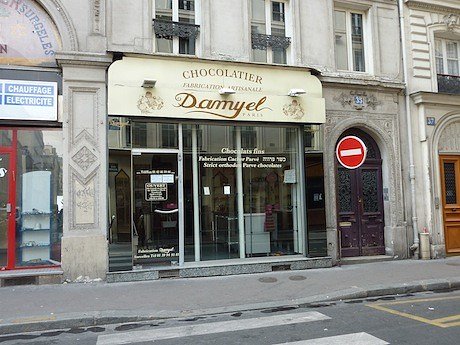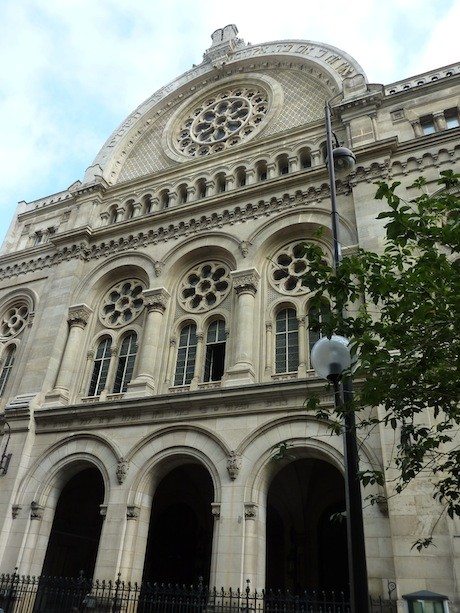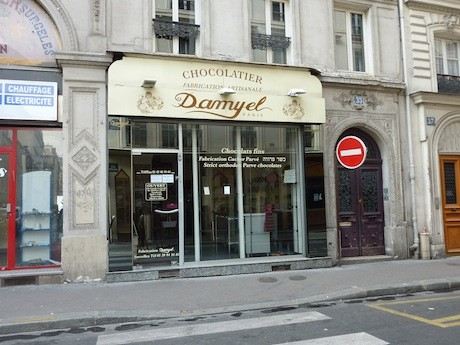Another Jewish Paris

Thu 24 Feb 2011

Victoire Synagogue, in the 9th Arrondissement.
Talk of Jewish Paris inevitably conjures up visions of the Marais, a trendy area located in the 3rd and 4th Arrondissements of the city. The Guimard Synagogue on the rue Pavée (open to the public on special occasions), the increasingly posh rue des Rosiers and pastries from Sacha Finkelsztajn are among the must-do’s for visitors to the quartier. But few realize that there is another Jewish enclave, in the city’s 9th Arrondissement, that merits a visit just as much as its famous Marais counterpart.
Paris’ largest synagogue lies near this second enclave, on the rue de la Victoire. It was built to relieve the burden of a burgeoning Ashkenazi population worshipping at the Nazareth Synagogue in the 3rd Arrondissement. Construction of the Victoire Synagogue began in 1867. It was inaugurated in 1874 and opened for worship in 1876. Its courtyard communicates with the Jewish Consistoire that is located around the corner on the rue St.-Georges. The synagogue’s immense tympanum, topped by the tablets of law, is impressive to behold.
“The other Jewish Paris” lies a few blocks away from the Victoire Synagogue, in the quartier called Faubourg Montmartre. You will know that you have arrived when you reach a five-point intersection and see the famous chocolate and candy vendor A la Mère de Famille on the corner of the rue de Provence and the rue du Faubourg Montmartre. Upon crossing the rue du Faubourg Montmartre, the rue de Provence becomes the rue Richer—the historic equivalent of “Main Street” in the Jewish quarter. The street boasts several bookstores and kosher food establishments (including the chocolatier Damyel), and anchors side streets such as the rue Saulnier and the rue de Trévise that are home to the Beth El Synagogue and a number of Jewish businesses.

The chocolatier Damyel, in the 9th Arrondissement.
Along with the rue de Provence and the rue Richer, the rue Cadet contributes to the five-point intersection at the rue du Faubourg Montmartre. This pedestrian walkway is home to the newly remodeled Freemason museum at No. 16, which reopened on February 10, 2010. The rue Cadet is also home to Rich, a contemporary restaurant attached to a casino and game room called Cercle Cadet. The Ashkenazi synagogue Adas Yereim and its study center, called a yeshiva, sit just steps away at No. 10. A small kosher supermarket lies farther up the street, across from the modern, three-star hotel Opéra Cadet. The decrepit Cour Cadet at No. 9, occupied by offices of the Mairie de Paris, provides a glimpse of what the street looked like in yesteryear.
The rue Richer is most famous for the Folies Bergère cabaret, located about halfway down this short thoroughfare. The theatre stands at a three-point intersection that includes the rue de la Boule Rouge and the rue Geoffroy Marie. An eclectic mix of contemporary and classic hotels, a chic café, traditional bistros and kosher caterers and restaurants line these streets.
If you ever find yourself near the boulevards Montmartre and Poissonnière, take some time to walk up the rue du Faubourg Montmartre to enter and explore this delightful quarter of the “other” Jewish Paris!
Related links:
Sacha Finkelsztajn
Victoire Synagogue
A la Mère de Famille
Damyel
Folies Bergère
Editor’s note: For a wonderful walking trip of the Marais, contact Richard at Eye Prefer Paris or download one of our DIY walking trips of the Marais.
Monique Y. Wells is cofounder of Discover Paris!—Personalized Itineraries for Independent Travelers and a freelance writer and editor. She is the author of two books, numerous articles about Paris and the Entrée to Black Paris™ blog.